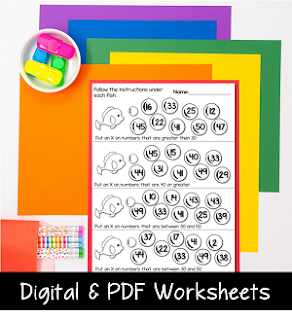Have you heard of WODB - Which one doesn't belong? If you are old like me (gasp) you might remember the song from Sesame Street... "One of these things is not like the others, one of these things doesn't belong" Which one doesn't belong now takes on a math spin. It is a great way to get your students to think critically.
I first came across WODB through twitter. If you search the hashtag #WODB, you will find a treasure trove of images to use. I believe this is the brainchild of Christopher Danielson who wrote the book of the same name. Another fantastic resource for images is WODB.ca
How WODB works
What I love most about WODB is the thinking it provokes in young learners. Students are so concerned with finding the right answer and with this there ISN'T a correct answer. For my first graders, it took a few times doing this to understand that one person was not more right than another.I use WODB as a math warm-up every Wednesday. It generally takes about 10 - 15 minutes. A typical session starts with me showing them the image and asking them to think but not to say anything. When they are ready to share their thoughts on which one doesn't belong, they put a thumb up in front of their chest. I have them do this rather than raising their hands because it is less visible to everyone who has an answer and who doesn't. My students who need more think time tend to shut down when everyone else starts to raise their hand.
WODB in Action!
Here is an image I created and used with my first-grade students. Below are some of the answers they had.
1. 2 doesn't belong because it is coloured.
2. 3 doesn't belong because it is a double.
3. 1 doesn't belong because it has one blank side.
4. 2 doesn't belong because it doesn't add up to 6, and all the rest do.
5. 2 doesn't belong because it has both an odd and even number.
6. 2 doesn't belong because it is a bigger domino
7. 4 doesn't belong because it is sideways not up and down.
As you can see, some students see the math in this (sums, orientation, odd/even) and others are seeing other things like colour and size. Either way, they are still looking closely and thinking. I do not praise one answer more than another, and I often find that kids notice things I had not even thought of.
There are so many WODB challenges that relate to shape and number, but there are lots of other ones too. My students love it when we do them and often ask if we can do them more often. If your school is invested in daily number talks, this is something else to add to your weekly rotation.
Here are a few more WODB that I have created. I will add more images here as I create them.

Pin the post so you can return to see new WODB posted!
Have you tried WODB? Comment below and let me know.
Until next time,




















.png)









No comments